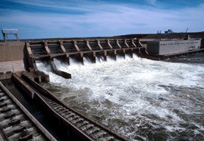Plans by a Canadian company to purchase a utility in Washington State is far more than your garden-variety corporate acquisition. If the deal is approved by state and federal regulators, it will wreak havoc among the region’s ratepayers and severely burden the area’s economy by replacing reliable, affordable electricity with intermittent and expensive wind power – all in the name of combating climate change.
For decades, Spokane-based Avista Utilities, a division of Avista Corp., has been serving eastern Washington, northern Idaho, and the Anchorage area of southern Alaska. Comprising the centerpiece of Avista’s service are four dams on the Snake River. As efficient and reliable sources of baseline electricity, the Samke River dams have contributed substantially to Washington having the lowest power rates of any state in the U.S.
But that may all change if Ontario’s Hydro One is allowed to gobble up Avista. Hydro One’s loving embrace of green energy, particularly wind turbines, will result in skyrocketing electricity prices for Avista’s current customers. Under Ontario’s Climate Change Action Plan, Hydro One, which is 70% owned by the Ontario government, must reduce its greenhouse-gas emissions 80% below 1990 levels by 2050. Hydro One already has the highest electricity rates in Canada; its customers are soaked to the tune of 30 cents per kilowatt hour (kwh) compared with Avista’s current rate of 8.5 cents per kwh.
Soaring Rates
In other words, once Avista’s customers become Hydro One’s customers, they could be faced with electricity bills as much as 350% higher than they are currently paying. Indeed, one glance at what has happened in Ontario should send shivers down the spine of Avista ratepayers. From 2005-2016, off–peak electricity rates increased 149% and on-peak rates rose71%. In 2015 alone, power rates in the province soared 25%.
These skyrocketing power rates are what happens when utilities – often coerced by governments in the name of “combating climate change” – shift from reliable sources of energy to politically fashionable but notoriously unreliable and expensive renewable energy. Out go coal, natural gas, nuclear, and hydro, and in come wind and solar. In fact, combating climate change means often little more than subsidizing and mandating wind and solar power.
No matter how generous the subsidies, no matter how stringent the government mandates for renewable energy, and no matter how breathtaking the “technological advances” in wind and solar power, the scheme cannot be to work.
Consider this: Wind-power facilities in Washington and Oregon have a capacity that is 37% higher than that of Avista’s four Snake River dams, yet the wind turbines produce 64% less electricity. This is further evidence that wind turbines – always subject to the whims of weather – never perform at anywhere near their capacity and cannot be relied on to produce the baseline electricity that powers homes, businesses, hospitals, schools, and other segments of a technologically sophisticated society. Over-reliance on expensive wind and solar power has is well on its way to making household electricity a luxury item in places like Germany, Spain, the UK, and Canada.
Sierra Club: Remove the Dams
As Hydro One prepares to take over Avista, the fate of the four Snake River dams hangs in the balance. The Idaho Sierra Club is already calling for removal of the dams and their replacement by wind and solar energy. Hydro One has been mum on the subject, but the company whose bread and butter has been draining its customers’ bank accounts with wind power. The temptation to look green – not to mention lining its pockets in the process – will be hard to resist. And if this means sacrificing ratepayers in the Pacific Northwest on the altar of Ontario’s Climate Change Action Plan, so be it.
Ironically, hydropower, which the Sierra Club and other environmentalists find so offensive, is the only form of renewable energy that provides electricity 24/7, irrespective of what the weather decides to do.
Defacing the beautiful Pacific Northwest with ugly, bird- and-bat-killing wind turbines will have absolutely no effect on the climate and will impose huge financial burdens on the region’s families.
Bonner R. Cohen, Ph. D., is a senior policy analyst with CFACT.

Environmental jihadists need to set an example by using only electric transport and heat and stop using any materiel related to or produced from oil products. No nice warm nylon coat or backpack, no driving on asphalt roads, no plastic computers or plastic credit cards or medicines and on and on. Essentially they should just die. The world would be a safer, cleaner and better place if they were all eliminated.
I appreciate the sarcasm. Few of the .leaders of the green energy proponents practice what they preach which leads me to believe they’re scientifically illiterate at best or charlatans at worst. There certainly is no doubt about the lack of sincerity of Al Gore. He was so worried about global warming causing sea level rise that he bought a beachfront mansion in Malibu to complement the Tennessee mansion with a carbon footprint 22 times the carbon footprint of the average house.
Environmentalists love the bird and bat killing machines.